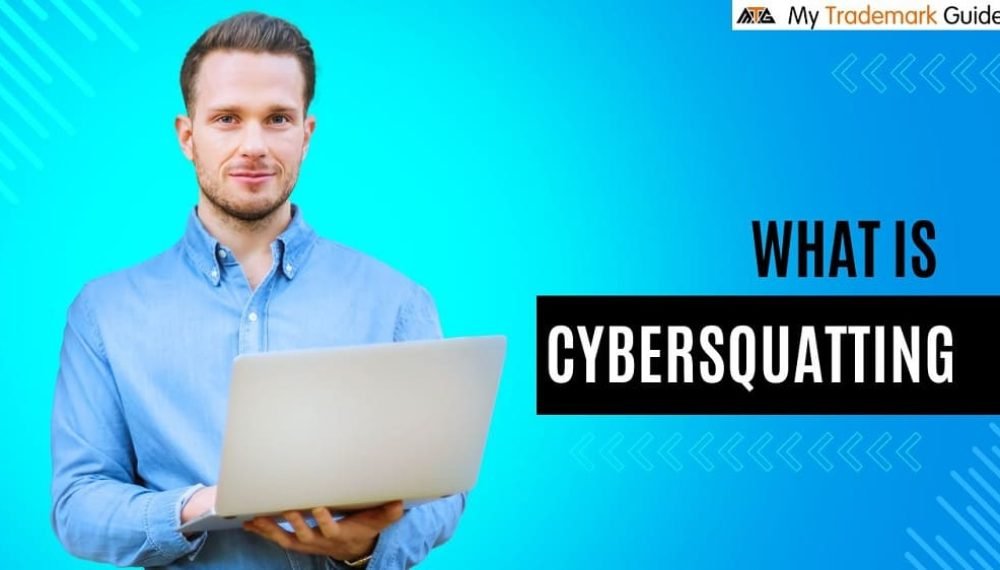What is Cybersquatting? Understanding the Legal Landscape for Trademark Protection

Introduction
In today’s digital age, domain names are invaluable assets for businesses, enabling them to connect with their audience and promote their brand identity. However, with the rise of domain name registrations, an issue known as cybersquatting has emerged. Cybersquatting involves the unauthorized registration of domain names that closely resembles an established trademark, often with the intent of profiting from the goodwill of those brands. This practice poses significant legal and financial risks to businesses and understanding the nuances of cybersquatting is crucial for companies aiming to protect their trademarks.
What is Cybersquatting?
Cybersquatting also known as domain squatting, refers to the act of registering, selling or using a domain name with the intent of benefiting from someone else’s well-known trademark. Cybersquatters typically choose domain names that are identical or confusingly similar to well-known brands or trademarks. The intent behind this practice is usually to sell the domain back to the trademark owner at an inflated price or attract web traffic by misleading consumers or gain commercial advantage through association with the brand.
Example Scenario:
A recent example of cybersquatting is the registration of the domain name jiohotstar.com by an individual who anticipated a merger between the brands Jio and Hotstar. By securing this domain, the registrant intended to profit by selling the domain back to the companies involved.
Types of Cybersquatting
Cybersquatting can take various forms, which includes the following:
- Typo-squatting: Registering domain names with minor spelling variations of popular trademarks, like “goggle.com” instead of “google.com.”
- Name-jacking: Registering the domain name of a famous individual or public figure to attract traffic or profit.
- Identity Squatting: Creating domains that suggest official partnerships or mergers, as seen in the jiohotstar.com example, to imply association with major brands.
- Domain Parking: Registering multiple domains with the intent of reselling them later to interested parties or redirecting them to ads and monetized content.
Legal Implications of Cybersquatting In Trademark Law
The legal stance on cybersquatting varies by country but is generally covered under trademark laws and specialized legislations. Here are some significant legal frameworks:
- U.S. Anti-Cybersquatting Consumer Protection Act (ACPA)
In the U.S., the Anti-Cybersquatting Consumer Protection Act (ACPA) makes it illegal to register domain names similar to established trademarks if the intent is to profit from the goodwill of the trademark. To pursue a claim under ACPA, the trademark owner must prove any or all of the following:
• The domain name is identical or confusingly similar to a distinctive trademark.
• The registrant of the domain had no legitimate right or interest in that domain.
• The domain was registered in bad faith. - Uniform Domain Name Dispute-Resolution Policy (UDRP)
The UDRP established by the Internet Corporation for Assigned Names and Numbers (ICANN), provides an arbitration mechanism for resolving cybersquatting disputes. Under UDRP, if the trademark holder can prove that the domain was registered in bad faith, they may be able to have the domain transferred or cancelled without going through lengthy court proceedings. This policy has global reach making it an efficient remedy for international disputes. - Indian Trademark Law and Cybersquatting
In India, while there is no specific anti-cybersquatting law, cybersquatting can be challenged under the Trade Marks Act, 1999. Trademark holders can pursue action for infringement or passing off if a domain name falsely implies association with their brand. The Indian courts generally apply a “bad faith” standard to determine if the registration was intended to deceive or benefit from the trademark’s goodwill.
How Businesses Can Protect Their Trademarks from Cybersquatting
There are several proactive and reactive strategies that businesses can use to protect their trademarks from cybersquatting:
- Trademark Registration and Monitoring: Registering a trademark and actively monitoring new domain name registrations can help companies detect potential cybersquatting attempts early. Several companies offer domain monitoring services to alert businesses if similar domain names are registered.
- Registering Variants of the Domain Name: By registering variations of their main domain name, such as common misspellings, companies can reduce the risk of typo-squatting. Securing domains in different top-level domains (e.g., .com, .net, .org) can also limit cybersquatting opportunities.
- Filing Cybersquatting Complaints: If a cybersquatting instance is identified, businesses can file a complaint under the UDRP or ACPA, depending on the jurisdiction. The UDRP is particularly effective for international domain disputes.
- Educating Consumers: Educating customers on official domain names and warning them about potential scams can help businesses protect their brand image and reduce the impact of cybersquatting.
Recent Case Of Cybersquatting
- Case 1: jiohotstar.com
This case highlights the opportunistic registration of domains based on anticipated mergers. Although speculative, such actions fall under cybersquatting as they exploit the brand goodwill of well-known companies. Legal experts suggest this may lead to proceedings under India’s Trade Marks Act or even arbitration under UDRP.
- Case 2: Microsoft vs. MikeRoweSoft.com
In this well-known case, a Canadian teenager registered “MikeRoweSoft.com,” a phonetic variation of “Microsoft.” Microsoft pursued legal action, leading to a settlement in which the domain was transferred to Microsoft. This case underscores that even humorous or phonetic variations of trademarks can be grounds for cybersquatting claims.
Consequences of Cybersquatting
For cybersquatters, the penalties can be significant. Under ACPA, damages can reach up to $100,000 per domain name. Courts may also order domain transfers, monetary penalties, and attorney’s fees. Additionally, the negative publicity from being labelled a cybersquatter can damage a company’s or individual’s reputation. Legal rulings are also increasingly favouring trademark holders, making cybersquatting a high-risk endeavour.
Conclusion: Importance of Trademark Vigilance
As cybersquatting cases continue to emerge, businesses must be vigilant in protecting their trademarks online. Registering a trademark is only the first step; proactive domain management, monitoring and consumer education are essential for safeguarding a brand in the digital space. While legal remedies like ACPA, UDRP and trademark laws provide recourse, maintaining a strong online presence and controlling domain assets remain the best defence against cybersquatting.
Frequently Asked Questions (FAQs)
Cybersquatting involves registering or using a domain name similar to a well-known trademark with the intent to profit, which can harm a brand’s online reputation and customer trust.
Yes, cybersquatting is illegal in many jurisdictions. The Anti-Cybersquatting Consumer Protection Act (ACPA) in the U.S. and various international laws, including the Uniform Domain-Name Dispute-Resolution Policy (UDRP), offer protections.
Trademark owners can file a complaint through the UDRP process or take legal action under local laws like the ACPA to regain control of the domain and seek damages.
Cybersquatting specifically involves domain names registered in bad faith, while trademark infringement is a broader term covering unauthorized use of a trademark, which can include products, services, or domain names.
Yes, if someone uses your trademark without permission in a domain to mislead or profit, it may constitute trademark infringement and cybersquatting, both of which are actionable.
Common signs include domains that closely resemble popular brands, are parked with no content, redirect to competitors, or demand high prices for sale to the rightful trademark owner.
Businesses can prevent cybersquatting by registering variations of their brand name domains, monitoring new registrations, and securing trademarks to strengthen their legal protection.
The UDRP is a legal framework established by ICANN that allows trademark owners to dispute domain names registered in bad faith, providing a quicker, arbitration-based resolution to cybersquatting cases.
Yes, cybersquatters may face penalties such as having the domain transferred to the trademark owner, paying damages, or facing fines depending on the jurisdiction and severity of the case.
Trademarks provide a legal basis for protecting brand identity online. All brands, especially those with unique names or high visibility, should consider trademark registration to help prevent cybersquatting.




